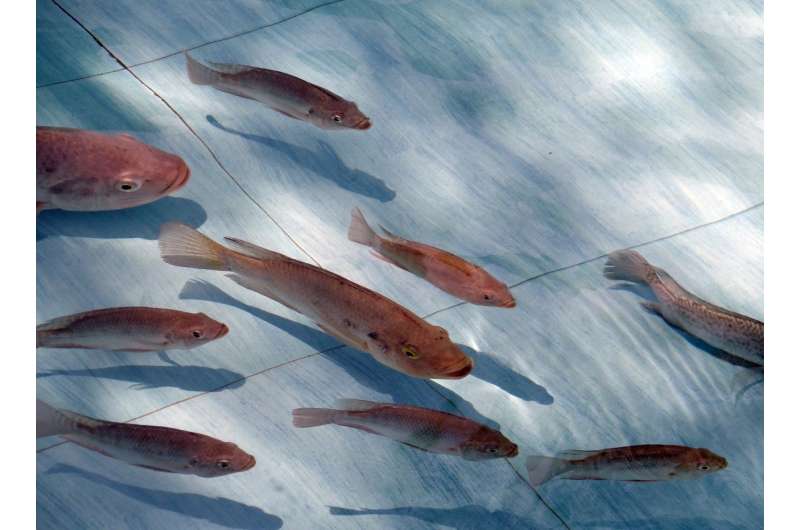Genetics influences physical fitness of tilapia

Wageningen University & Research scientists have demonstrated that genes influence swimming fitness of tilapia. As there are indications that fitter fish are also healthier and more resilient, the researchers recommend including fitness in selective breeding programs for farmed fish. Nile tilapia is the second most cultivated fish species in the world after carp and provide cheap protein and essential micronutrients to populations in Africa and Asia for good nutrition, health and development.
"In humans, cardiovascular fitness is typically measured through a cycling or treadmill test," program leader and personal professor Hans Komen says. "In farmed animals, this is rare. We have developed a methodology for fish." This test shows for the first time that physical fitness, measured through this test, is largely inherited.
Swimming carousel
In the study published in Scientific Reports, scientists have Nile tilapia swim against the flow in a carousel. By gradually increasing the flow, they are able to precisely measure when the fish reached their maximum swimming capacity. As in humans, their fitness depends on their ability to absorb oxygen and cardiovascular condition.
Fast swimming fish showed slower growth. "We suspect this results from of an evolutionary principle," says researcher Arjan Palstra. "To avoid predation, you can either swim faster to escape, or grow larger as a defense."
There are also indications that fitter fish are healthier fish. The researchers therefore recommend that fish breeders include the swimming test in their selective breeding programs. To date, the main focus has been increasing growth rate.
Important protein source
Second only to carp, Nile tilapia is the world's most cultivated fish and an important source of protein and essential micronutrients for good nutrition, health and development for many people. Particularly in Asia and Africa where small-scale farmers have cultivated them in cages and ponds for decades. In the past, fitness and resilience was not much of an issue, but with climate change accelerating, it is increasingly important to breed fish that can adapt to more stressful conditions.
Komen and his team intend to apply their results to other fish species such as trout, salmon and sea bream. As a result of climate change, the seawater temperature in Norway and the Mediterranean Sea is rising, affecting the physiology and fitness of fish cultivated in these regions.
More information: Samuel Bekele Mengistu et al, Heritable variation in swimming performance in Nile tilapia (Oreochromis niloticus) and negative genetic correlations with growth and harvest weight, Scientific Reports (2021). DOI: 10.1038/s41598-021-90418-w
Journal information: Scientific Reports
Provided by Wageningen University


















